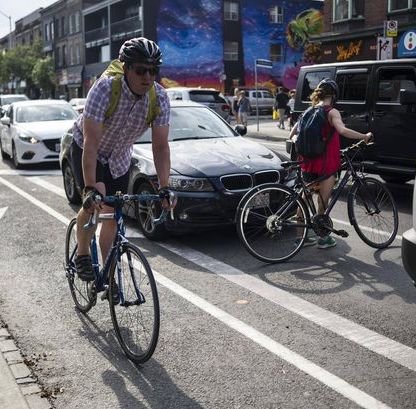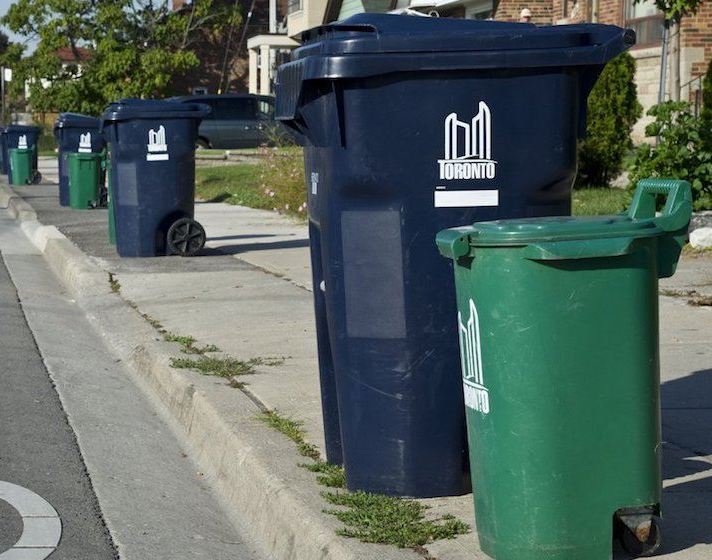All about TransformTO, Toronto’s climate action strategy
Urban areas have a massive role to play in combating the climate crisis. This is because they are home to approximately 82% of the Canadian population - or 30+ million people - all relying on their cities’ infrastructure, public transit, waste systems, and more. That is a lot of people subject to the governing principles of their city! In Toronto, the municipal government has adopted a strategy to reduce greenhouse gas emissions by 2040 called TransformTO. Because Toronto is Canada’s largest city by population and because it is our first market at Suppli, we felt it would be valuable to provide an overview of this strategy in today’s blog post.
What is TransformTO?
TransformTO is Toronto City Council’s strategy to reduce community-wide greenhouse gas emissions to net zero by 2040. It lays out four targets in meeting this goal when compared to 1990 greenhouse gas emissions levels:
Reduce levels 30% by 2020
Reduce levels 45% by 2025
Reduce levels 65% by 2030
Achieve net zero emissions by 2040
According to the city, major sources of emissions come from burning natural gas to heat spaces and water, burning of gasoline for personal vehicles, and methane released from landfills. It is fitting, then, that homes and buildings (accounting for 57% of emissions), transportation (accounting for 36% of emissions), and waste systems (accounting for 7% of emissions) are the key areas of focus for TransformTO.
Homes and Buildings
Courtesy of MPA
As mentioned, when it comes to homes and buildings, a major source of emissions stem from the use of natural gas to heat spaces and water. TransformTO’s broad strategy to reduce emissions in this area includes requiring all new homes and buildings to be designed and built to produce near zero emissions and reducing emissions in existing buildings to half the level of 2008 emissions, both by 2030. Standards for designing and building new homes are governed by the Toronto Green Standard (TGS) program, which requires certain greenhouse gas reducing initiatives (referred to as Tier 1 initiatives) to be implemented by builders and rewards them financially for voluntarily going above and beyond Tier 1 (to Tier 2 or 3 initiatives). You can learn more about these standards here. There is also a published standard for existing buildings, called the Net Zero Existing Buildings Strategy.
Transportation
Courtesy of the Globe
Recall that gasoline used in personal vehicles accounts for a large proportion of greenhouse gases emitted from transportation. By 2030, TransformTO’s goal is to have 30% of registered vehicles in the city electric and to have 75% of commutes under 5km achieved by walking, biking, or public transportation. In order to support a move to personal electric vehicles, the city has an Electric Vehicle Strategy to promote widespread adoption that focuses on increasing charging availability in the city, addressing cost and convenience barriers, and educating and making the public more aware of the benefits of electric vehicles, to name a few. Another component to reducing greenhouse gas emissions from transportation involves growing the network of cycling lanes in the city, renewing old lanes that are a safety concern, and connecting cycling lanes where gaps exist under the Cycling Network Plan. ActiveTO, which includes many of the cycling initiatives already mentioned, is yet another initiative that also places a focus on creating more space in general for people to get around, including the Quiet Streets initiative to make walking safer and more enjoyable for residents. A final key tenet worth noting under the transportation pillar involves enhancing bus and streetcar transit, which facilitates much of the city’s public transport due to the limited scope of the subway system, to be more reliable and enjoyable to ride under the RapidTO Strategy.
Waste
Courtesy of Daily Hive
Methane gas production in landfills is yet another contributor to greenhouse gas emissions, as mentioned. By 2030, the city’s goal is to divert 70% of waste from its waste management system and to identify more sustainable methods of consumption in Toronto’s operations and economy. The Long Term Waste Management Strategy is a key component of the waste initiative. Within this strategy are a number of programs including the TOwaste App to better direct responsible disposal of waste, community grants for waste reduction, and the Love Food Hate Waste food waste reduction campaign. Another major component within the waste management strategy involves reducing single-use and takeaway items. This program is currently under the first stage, which simply involves encouraging businesses to voluntarily implement actions to reduce their single-use. If you’re interested in keeping up with how this particular component of Toronto’s waste management strategy evolves, you can subscribe to updates here. If you feel compelled to nudge the city along to further stages of single-use waste reduction above and beyond encouraging the voluntary participation of establishments, you can let them know by emailing wastestrategy@toronto.ca.
More areas of focus for TransformTO
The above may seem like a lot to unpack, but it’s just the tip of the TransformTO iceberg. There are a number of other initiatives specific to the city (like electrifying the city’s own fleet of vehicles), ones aimed at protecting our ravines (which provide valuable ecosystem services), protecting our urban forests (by increasing canopy cover, biodiversity, etc.), and more!
Where we’re at
The TransformTO website has not been officially updated to report where the program stands with respect to its 2020 target to reduce emissions by 30% versus 1990 levels. It indicates that this is due to the fact that it issues emissions inventory on a two-year lag cycle to ensure the best available data. That means that we should know this year whether the goals for 2020 greenhouse gas emissions reduction were met. The city does mention that at the time of publishing, it was on track to meet these goals.
Further reading, resources, and things we found interesting:
The full TransformTO Net Zero Strategy
A framework to guide future efforts to involve Indigenous Traditional Knowledge and Indigenous Communities in designing and delivering climate action in Toronto, which we believe to be paramount, can be found in Toronto’s Indigenous Climate Action Report
To guide a just and equitable transition to net zero, Toronto has published the Equity and Engagement Report
A specific thought piece by the Toronto Environmental Alliance on where Toronto is at with reducing single-use items and where it needs to go
Cover photo courtesy of Canadian Climate Challenge



